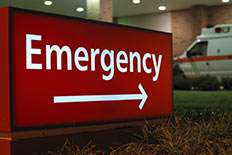Hazards in homes and gardens a major injury cost

(Medical Xpress)—A significant proportion of injuries in the home, costing millions of dollars a year, are related to how a house is built and maintained, according to new research from the University of Otago, Wellington.
This latest study in home injury prevention investigated 1328 home injuries reported to ACC involving 1612 people between 2006 and 2009. It also looked at commonly occurring potential injury hazards in the home that could be repaired at modest cost.
Trained inspectors revealed a range of potential injury hazards in many homes including the lack of working smoke detectors (65%), incompletely fenced driveways (55%), hot water temperatures at over 60 degrees (49%) and poorly lit access to the house (34%).
"We found that important structural hazards can be fixed relatively cheaply at an average of about $600 per household. The findings of this study and previous research we've done in this area indicate that this expenditure is justified in terms of increased safety," says lead author Dr Michael Keall.
"Home hazards impose a considerable cost in terms of injuries, with the overall social cost considerably higher than the total cost to the country of road injuries."
Keall says a previous University of Otago, Wellington, study showed that the total social cost of deaths and injuries in the home cost three and half times as much as road injuries; that is $13 billion compared to nearly $4 billion for road injuries. In 2007, 17,598 people were admitted to hospital as a consequence of home injury, along with another 649,000 minor injuries which had to be medically treated.
This new study has found that 38% of injuries are related to a structural aspect of the home environment, both inside the house and outside in the garden.
"We've designed a protocol for identifying and repairing these and other structural hazards and the effect of this protocol is being examined at present by a major Health Research Council-funded trial to determine which hazards would be best to fix for the most benefit in terms of reduced injuries and cost to ACC, the health sector, and society more generally."
The locations for the injury and other issues were determined by in-depth phone interviews. This analysis showed that outdoor areas of the home are important for injuries as 37% of events happen outside, on access paths, steps and in the garden.
Particularly vulnerable groups for home injury are the very young (under 5) and people over the age of 80. But the home is where New Zealanders spend most of their lives, so it is an important setting for injury for all age groups.
"One of the more interesting aspects is that people who are injured tend to blame themselves rather than look at hazards around the home that may have played a role, which can often be easily fixed. However, when these hazards are identified by trained inspectors, householders may be able to make use of this information to improve the safety of their homes," Keall says.
Dr Keall says this latest study is another important step in the process of clarifying exactly what areas of the home should be made safer to reduce injuries, which are costing the country billions of dollars a year.
This study has been published in the international journal Accident Analysis and Prevention.

















